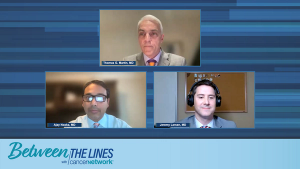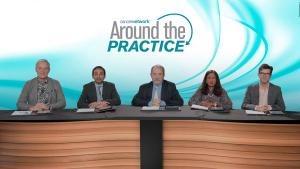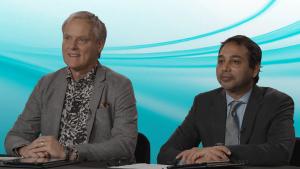Articles by Ajay K. Nooka, MD
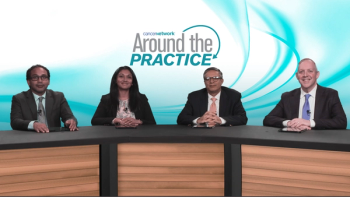
Panelists discuss a clinical scenario involving a 56-year-old male man with myeloma and del 17p deletion, treated with RVD induction, auto transplant, and lenalidomide maintenance, who relapsed after 2 years and is now referred to discuss chimeric antigen receptor (CAR) CAR-T versus vs standard therapy, sharing key takeaways and pearls from the case.

Panelists discuss successful collaborations between academic centers and community practices in the context of (chimeric antigen receptor (CAR) T-cell therapy for multiple myeloma, key lessons learned in integrating CAR T therapy into the treatment landscape, and future plans for expanding CAR T therapy’s role in earlier lines of multiple myeloma treatment.

Panelists discuss their institution’s approach to co-management and co-monitoring of (chimeric antigen receptor (CAR) -T patients, strategies to facilitate seamless transitions of care between academic centers and community practices, common challenges in the CAR -T referral process and solutions, and advice for community physicians on the timing and preparation for patient referrals.

Panelists explain how CAR-T cell therapy works and describe the treatment process, discussing whether CAR -T is considered a complex procedure at their institution or if the logistics have been streamlined into clinical workflows, and they also detail their institution's approach to bridging therapy for patients awaiting CAR-T manufacturing and infusion, including whether patients are managed in-house or sent back to community centers.

Panelists discuss which patients are considered for CAR-T therapy in second-line treatment for relapsed/refractory multiple myeloma (R/R MM) (cilta-cel vs ide-cel), describe the specific criteria and institutional guidelines used to determine patient eligibility, and explore how non-medical factors like such as location and financial considerations impact patient selection, while also outlining the typical CAR-T referral process from community physician outreach to patient evaluation and selection.

Panelists discuss the key factors that influence their institution's decision to utilize CAR-T therapy in earlier lines of treatment for relapsed/refractory multiple myeloma and explain the next steps they would take if choosing CAR-T, including the rationale behind their decisions.

Panelists discuss the data surrounding the use of CAR-T therapy in earlier lines of treatment for relapsed/refractory multiple myeloma (R/R MM), including findings from the cilta-cel (Popat R, et al. ASH 2024 No. 1032; Mateos MV, et al. IMS 2024 No. OA-65), and Idel-cel (Ailawadhi S, et al. Blood 2024) studies, and share their thoughts on the implications of these results.
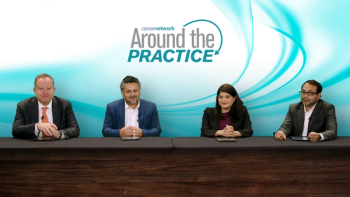
Panelists discuss effective strategies for promoting the adoption of bispecific antibodies in relapsed/refractory multiple myeloma (R/R MM) treatment, emphasizing the importance of educational initiatives, improving care transitions between academic and community settings, addressing misconceptions, and sharing key takeaways and clinical pearls for community oncologists.

Panelists discuss strategies for sequencing bispecific antibodies with B-cell maturation antigen (BCMA)–targeted therapies, considering factors such as prior CAR T-cell treatment, the impact of relapse timing on treatment decisions, and approaches for managing high-risk cytogenetics and extramedullary disease in relapsed/refractory multiple myeloma (R/R MM).

Panelists discuss the rationale behind combination strategies with bispecifics in relapsed/refractory multiple myeloma (R/R MM), highlighting key studies such as RedirecTT-1 for teclistamab and talquetamab, TRIMM-2 for talquetamab and daratumumab, and MagnetisMM-32 for elranatamab, along with considerations for step-up dosing and outpatient administration protocols.

Panelists discuss recent updates in the management of relapsed/refractory multiple myeloma, focusing on key studies such as MonumenTAL-2 for talquetamab, long-term follow-up data from the phase 1/2 MajesTEC-1 for teclistamab, and findings from MagnetisMM-3 regarding elranatamab.

Panelists discuss how the current treatment landscape for relapsed/refractory multiple myeloma (R/R MM) includes standard options like such as IMiDs, PIs, and mAbs, while highlighting the emergence of novel therapies such as CAR T- cells and bispecific antibodies, which address unmet needs and offer potential advantages in treatment efficacy and patient outcomes.
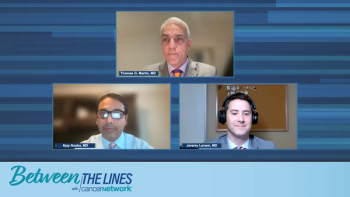
Thomas Martin, MD; Ajay Nooka, MD; and Jeremy Larsen, MD, share closing thoughts on the evolving landscape of cytokine release syndrome management in relapsed/refractory multiple myeloma.
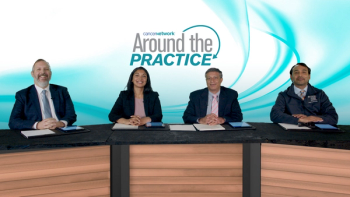
Subject matter experts share strategies for determining treatment selection and duration for patients with transplant-ineligible NDMM.

Subject matter experts share strategies for determining treatment selection and duration for patients with transplant-ineligible NDMM.

Following their review of data from MajesTEC-1, panelists consider how they manage patients with cytokine release syndrome in the real-world setting.

Ajay Nooka, MD, MPH, FACP leads a survey of the MAIA study, including a sub-group analysis of the MAIA study in frail patients, as well as findings from the MagnetisMM-6 study.

Jonathan Kaufman, MD describes a second patient case featuring a 76-year-old female diagnosed with transplant-ineligible NDMM.

Key opinion leaders Thomas Martin, MD; Ajay Nooka, MD; and Jeremy Larsen, MD, reflect on the use of tocilizumab in patients experiencing cytokine release syndrome on MajesTEC-1.

Defining transplant eligibility, explaining the role of transplant in NDMM, and differentiating between high- and low-risk MM.

Thoughtful discussion centered around recently presented updates to the GRIFFIN, MASTER, and GMMG-CONCEPT studies in NDMM patients.

Focused discussion on the advent of cytokine release syndrome in MajesTEC-1 and how it compared to the benefits derived from teclistamab therapy.

Experts on multiple myeloma discuss how to select treatment options in later lines of therapy.

Key opinion leaders share comprehensive insight to the treatment armamentarium for patients with relapsed/refractory multiple myeloma.

Experts Thomas Martin, MD; Ajay Nooka, MD; and Jeremy Larsen, MD, provide a broad overview of cytokine release syndrome as it relates to the management of multiple myeloma.

Nisha Joseph, MD leads an introduction to induction regimen options for patients with transplant-eligible NDMM.

Moderator Sagar Lonial, MD, FACP, and colleagues engage with the first patient case: a 65-year-old female diagnosed with transplant-eligible NDMM.
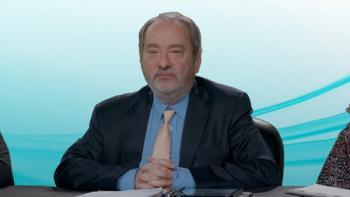
Management of Bispecific Toxicities and Final Thoughts on Treatments in MM
ByRobert Z. Orlowski, MD, PhD,Amrita Y. Krishnan, MD,C. Ola Landgren, MD, PhD,Ajay K. Nooka, MD,Cesar Rodriguez, MD Closing out the panel discussion, experts review the management of bispecific-related toxicities and share their final thoughts on treating patients with multiple myeloma.
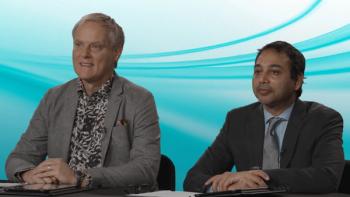
The Role of Belantamab Mafodotin and Its Impact on Future Treatment Options
ByRobert Z. Orlowski, MD, PhD,Amrita Y. Krishnan, MD,C. Ola Landgren, MD, PhD,Ajay K. Nooka, MD,Cesar Rodriguez, MD Expert oncologists discuss Belantamab mafodotin, its recent withdrawal from the U.S. market, and the clinical implications of the DREAMM trials for patients with R/R multiple myeloma.
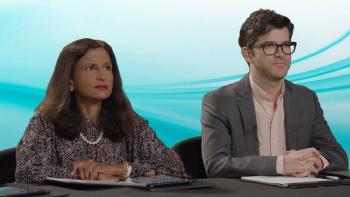
Rationale for Bispecific-Based Combinations in MM
ByRobert Z. Orlowski, MD, PhD,Amrita Y. Krishnan, MD,C. Ola Landgren, MD, PhD,Ajay K. Nooka, MD,Cesar Rodriguez, MD Shared perspective on the potential role of ADCs, CAR T-cell therapy, and other agents in combination treatment with bispecifics for patients with multiple myeloma.









